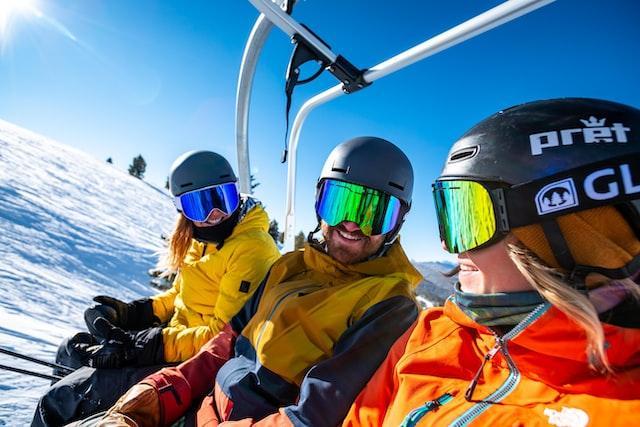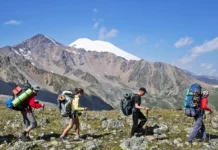Seasoned enthusiasts recognize there is more to the mountain skiing experience than the rush of navigating down the slopes. The conditions on a mountaintop can drastically change quickly, making it essential to be prepared for whatever Mother Nature throws your way.
One moment the sun can shine with slush on the ground only to change instantly to freezing sleet and heavy winds rendering those individuals who are improperly dressed to be lodge-bound for the remainder of the day in order to avoid the cold and possibility of discomfort.
It can be easy for first-time skiers to find themselves in this position with attention focused more on learning and overall enjoying a good time.
Before you head out for an unfamiliar experience, it’s wise to check out the best way to prepare; maybe do a bit of research on what you might need, the sort of gear, and even how to dress for optimum comfortability, warmth, and functionality. Let’s look at a few guidelines for selecting the appropriate ski wear.
What Are Some Tips On Ski Clothing For A First-Time Skier
The thought of diving into a new interest, like skiing, is exciting. It’s easy to focus on the latest ski equipment and gadgets for the logistical part of the experience and not center any attention on some practical aspects like ski clothing to keep you warm and comfortable in the snow.
It’s even more important for a first-time skier to properly prepare for the cold and changing mountain conditions. You will most likely be caught up in learning and the fun of the experience instead of recognizing the cold or discomfort that’s setting in.
What would be ideal is to do due diligence in research before scheduling a trip to educate on what to expect in the specific area you’ll be visiting with weather conditions, recommendations on gear and equipment, plus guidelines on how to dress for skiing.
While everyone believes they understand how to dress for cold weather, suiting up for skiing and other winter sports is specific. Check out these few tips and then visit this authoritative link for details on dressing safely for outdoor winter recreation.
- Do you need a helmet, or can you wear a hat while skiing
A helmet should be worn when skiing, regardless of your experience with the sport. No one ever anticipates the possibility of crashing, but it’s not often a soft, safe landing when it does occur.
As you careen down the mountain, a mound of obstacles is in the path. When you lose control, it’s not possible to change the course you’re taking.
The indication for ski helmets is they are relatively lightweight and fit comfortably with the sole purpose of protecting the brain. The sizes come in the conventional Small to Large range, with the fit being an important component for protection.
If you aren’t sure, measure your head and compare the sizes with the reference charts. You can buy standard helmets or progress these up to super advanced with the potential for audio integration. With each step up, there is a higher price point.
- Should you consider a hat and face mask anyway, how about goggles?
Helmets will add warmth to your head, but some people choose to wear a thin “beanie” underneath for added heat and greater comfort from the helmet. One recommendation is to wear a “balaclava” or combination hat/mask to add warmth to the face and head.
Goggles, on the other hand, are a wise addition to your ski attire since these mean to protect your eyes and face from heavy winds and the sun. These should fit with the helmet’s shape and that of your face. When shopping for these, it’s wise to already have the helmet and try them on together.
You don’t want the goggles to slide down your nose to have a gap along the forehead. The lenses are interchangeable so that you can switch them from overcast to sunny conditions.
It’s beneficial to practice before the trip to readily transition these while out since the weather can change almost instantaneously. Learn some tips on skiing for a first timer at https://shershegoes.com/skiing-for-the-first-time/.
Final Thought
When trying to figure out what to wear in cold temperatures for skiing, below 15 degrees, the idea is to seal in the warmth but prevent moisture buildup. That would mean a base layer with moisture-wicking to avert that possibility.
On top of that would be a fleece piece or sweater followed by a “puffy coat” and the shell layers, consisting of a waterproof ski jacket and pants. While you might travel to different locations with varied weather conditions, the layers you have will be sufficient; you will merely adjust what you put on to suit that specific climate.
The primary consideration is that you are warm and comfortable, have optimum movability and functionality, and have the most awesome time.














